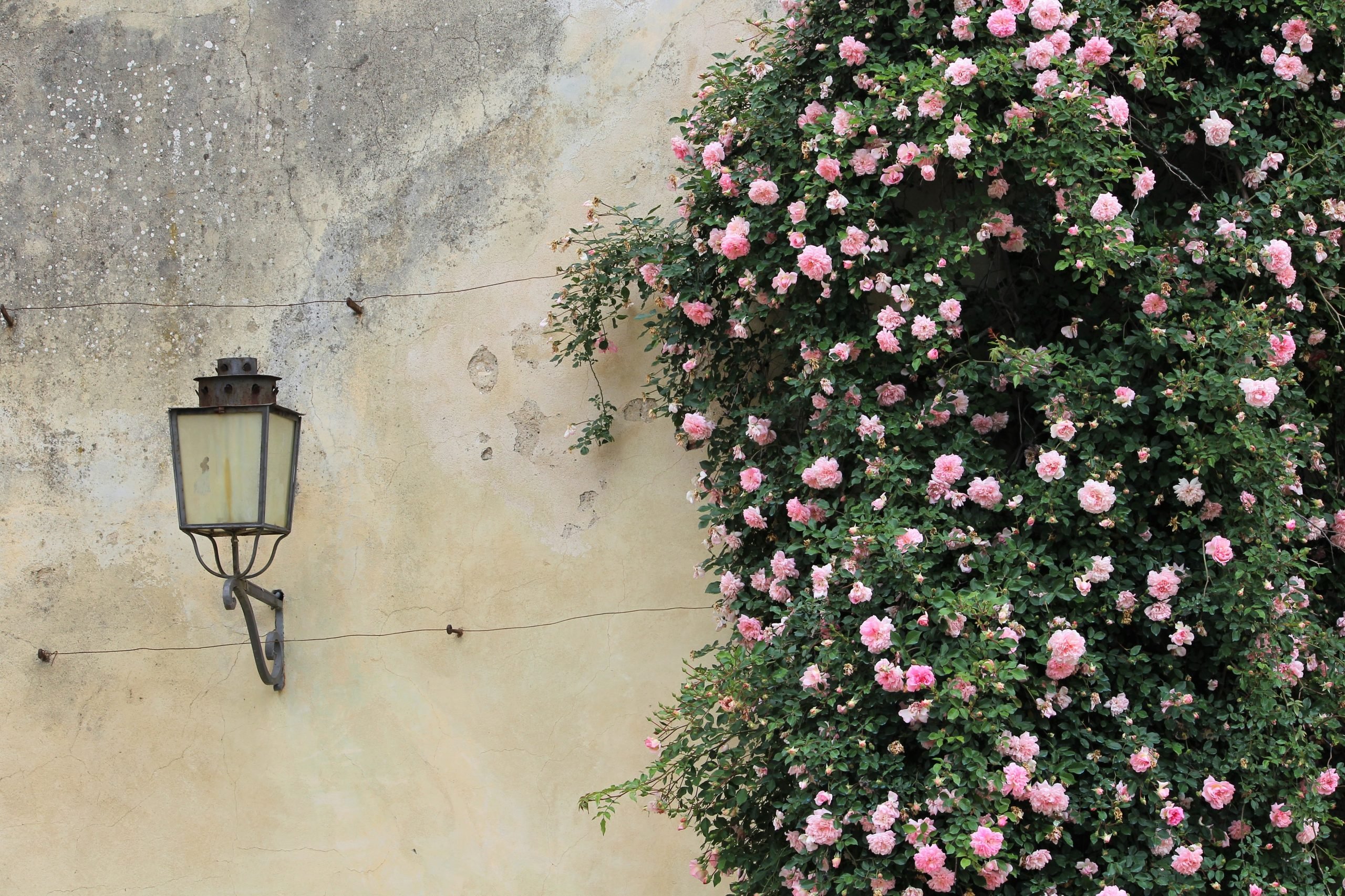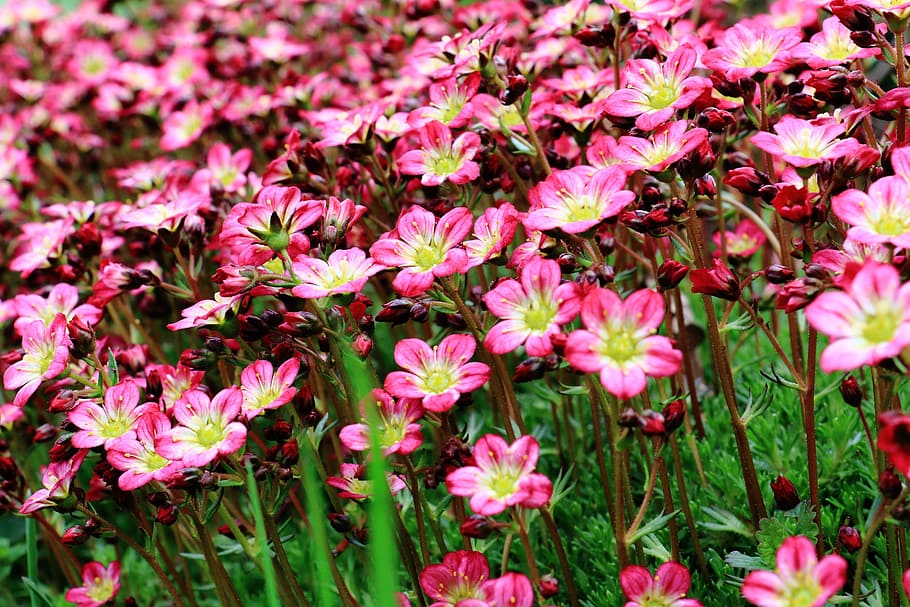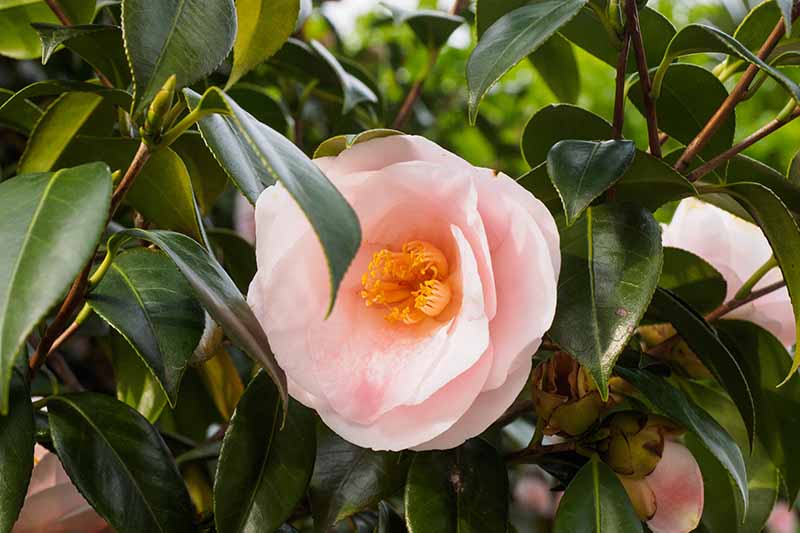How to Grow and Care for Tropaeolum ‘Nasturtium’
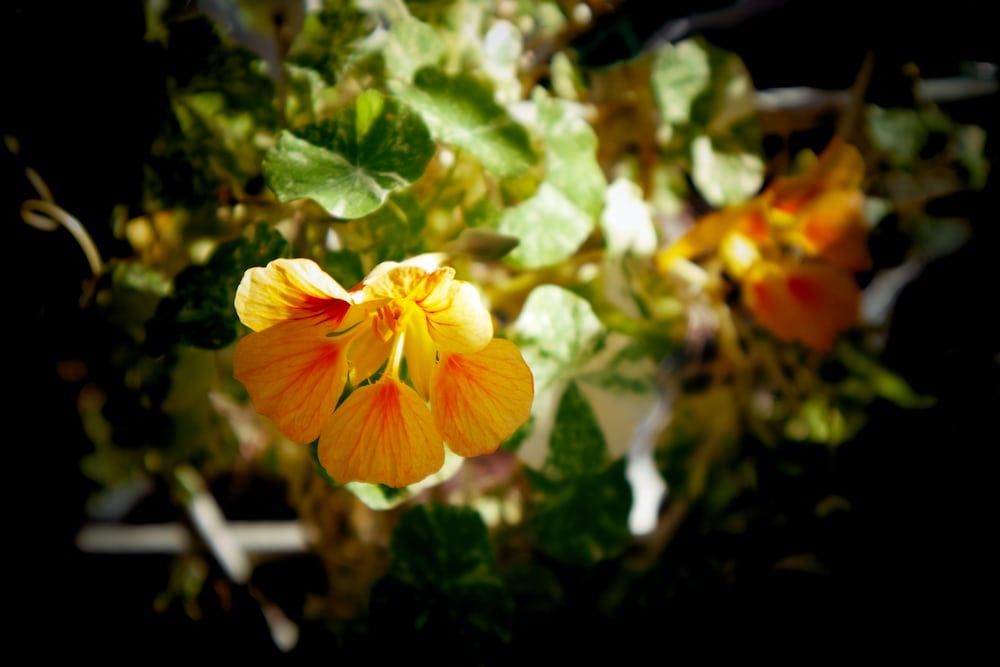
Table of Contents
Are you someone who’s been trying to grow Tropaeolum but can’t seem to get it right? Frankly, that’s perfectly fine because in order to grow and care for your nasturtiums successfully, it is important to choose the right location, provide them with proper nutrition and water, and keep an eye out for pests and diseases.
Tropaeolum is better known as Nasturtium, and it is a popular flowering plant well-known for its vibrant flower. Nasturtium is available in various colours, ranging from bright yellows, vibrant oranges, and deep red to gorgeous purple.
One particularly striking variety of nasturtium is the climbing nasturtium, which can grow up to six feet tall and produces an abundance of flowers in the summer and fall. These plants are perfect for trellises or fences and can also be trained to climb up walls or other structures. That’s what this article will help you achieve, so let’s get started with further ado.
Guidelines to Plant Nasturtium
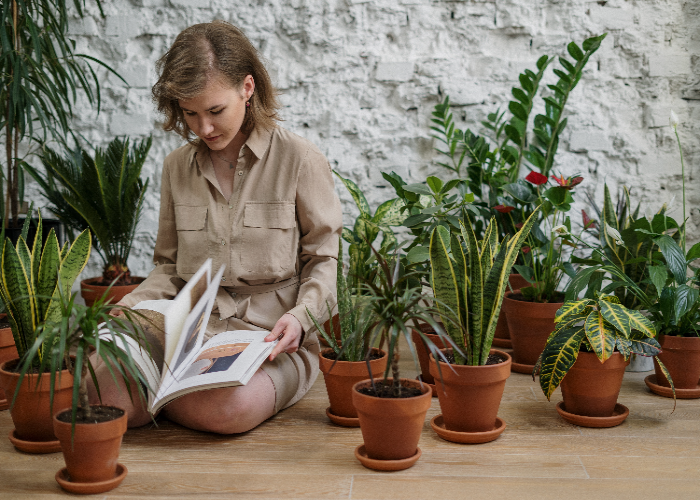
To ensure healthy growth and beautiful bloom, selecting the right location is crucial. While choosing a place to grow Nasturtium, one should consider sunlight, soil preferences, space, drainage and water requirements. So let’s go ahead with them one by one:
1. Light Requirements
Nasturtium thrives in full sun to partial shade. They require at least 6 hours of direct sunlight each day. They bloom well depending on the sunlight they receive. However, if you live in a really hot climate, make sure to offer some shade during afternoons to protect the plants from excessive and direct sunlight. It will prevent flowers from fading. You can even use companion planting to provide this protection (shade) through nearby shrubs or trees.
2. Soil Preferences
Nasturtiums aren’t really demanding plants. They are capable of growing in a variety of conditions. However, they prefer well-draining soil, slightly acidic to neutral (pH between 6.0-7.5). It’s important to avoid overly fertile soil. It might result in excessive foliage growth at the expense of blooms. To reduce the richness of the soil and improve drainage, you can add coarse sand or fine gravel.
3. Space
If you are planting Nasturtiums in your garden, make sure you maintain proper spacing, as it promotes healthy growth and air circulation. There should be a minimum space of about 8-10 inches (10-12 inches is best) between nasturtium seeds or seedlings, giving them enough room to grow and spread.
4. Drainage and Water Requirements
If you are planning to put your Nasturtiums in a container, choose a container that has drainage holes and a general-purpose potting mix. Monitor the moisture level, as the soil of this plant dries out more quickly than garden soil. Make sure the size of the container is large enough to accommodate the plant’s requirements.
Planting Nasturtium: The Right Way
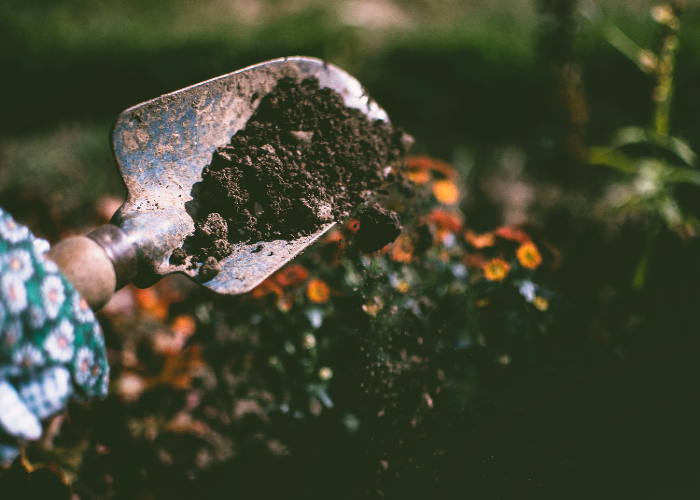
1. Right Weather to Plant
Nasturtiums are sensitive to frost and thrive in warmer climates. So if you are planning to grow them in the garden, wait until the soil is warm and there is no risk of frost. You can start planting seedlings indoors 4 to 6 weeks before the last expected frost date to get a jump-start on the growing season. Planting seedlings during cold temperatures can kill them or hinder their growth. Hence make sure nighttime temperatures consistently remain above 50°F (10°C) before transplanting them outdoors.
2. Planting Seeds or Transplants
Seeds: If you are directly planting nasturtium seeds in the prepared garden soil, press them about 1/2 inch (1.3 cm) deep into the soil. Keep the soil consistently moist until the seeds germinate, which usually takes 7-14 days, depending on the temperature and growing conditions.
Transplants: Gently remove the nasturtium seedlings. Make sure not to damage the roots. Dig a hole in the prepared soil that is slightly larger than the root ball. Place the seedling in the hole and press gently around the base of the plant to remove any air pockets.
Caring for Your Nasturtium Plants
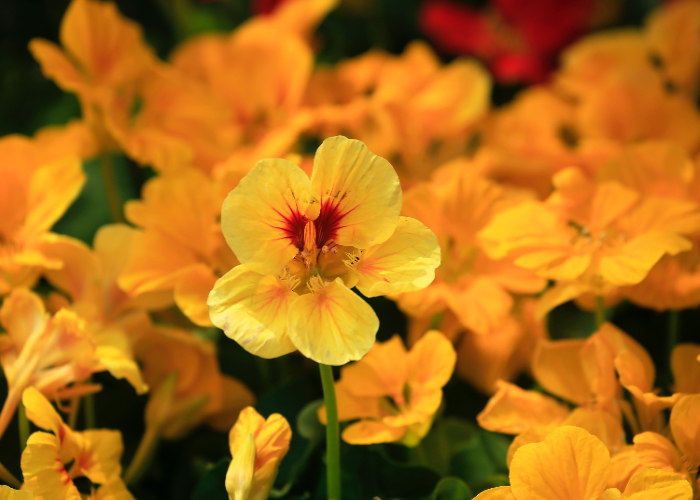
Now that you have planted Nasturtium plants, the next step is providing proper care. Ensure that your Nasturtiums have healthy growth and development by following the guidelines below-
1. Watering Guidelines
Frequency: Nasturtium plants demand consistent moisture, although they are quite drought tolerant as well. Hence water your plants regularly but make sure not to waterlog them. Depending on the weather, the frequency of watering can go up and down. If you have Nasturtium plants in a container or pot, make sure to water them frequently as they are most probably dry out more often.
Technique: Nasturtium leaves can catch fungal diseases if wet. Hence water is only the base of the plant. Use a drop irrigation system or Soaker house to target the water at the base of the plants. Water them early in the morning or late in the evening to allow your plants to absorb moisture before the sun becomes strong enough to evaporate the water.
Monitoring: Regularly check your plant’s soil, especially during hot or dry seasons. You can stick your finger about an inch into the soil. If it feels dry, water your plant. Overwatering and underwatering both can kill the plant, so make sure you keep balance.
2. Fertilizing Tips
Nasturtiums don’t have high maintenance requirements when it comes to nutrient requirements. They can perform well even with moderately fertile soil. But if you feel like your soil is lacking nutrients, consider adding compost, aged manure, or leaf mold to provide a slow-release source throughout the season.
Do remember only to use high-quality fertiliser; otherwise, you risk damaging your plant permanently. Fertilisers should be applied cautiously within the defined limits. At times, overfertilizing is more detrimental than not fertilizing at all.
3. Pruning and Deadheading
Nasturtiums generally don’t require pruning and deadheading, but you can trim them back if they become too largeor leggy. For climbing or trailing varieties, guide the vines to grow in the desired direction by gently attaching them to the support structure or weaving them through the trellis. Remove spent blooms to encourage continuous flowering throughout the season. It will prevent the plants from setting seeds and direct the plant’s energy into producing more flowers.
Companion Planting with Nasturtium
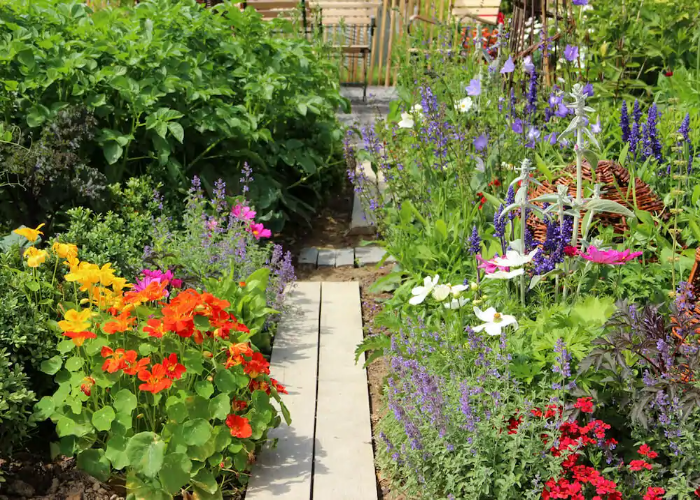
Companion Planting is a common horticultural practice involving growing different plant species in close proximity to benefit one another. In terms of controlling pests, improving soil fertility, maximizing space, and enhancing the overall health and productivity of the garden.
1. Benefits of Companion Planting with Nasturtium
Pest Control: Nasturtiums are known for keeping away a variety of garden pests like aphids, whiteflies, and certain beetles from other crops. Their bright colours and fresh aroma attract these pests and keep them away from your other valuable crops.
Soil Improvement: These plants can help break up compacted soil and improve its structure, allowing for better root development and water infiltration. This is beneficial, especially for heavy clay or poorly draining soils.
Pollinator attraction: Just like how Nasturtiums keep pests away from your other crops, it also attracts pollinators like bees, butterflies, and hummingbirds. By encouraging these beneficial insects to visit your garden, you can improve pollination rates and overall plant productivity.
2. Companion Plants for Nasturtiums
Nasturtiums pair well with many vegetables and herb crops due to their pest-repelling properties. Some suitable vegetable companions include Tomatoes, Brassicas, Cucumbers, Beans, Basil, Mint, dill, etc.
Tips for Successful Companion Planting with Nasturtiums
- Depending on the growth habit of your companion plant, try to complement their growing habits. Nasturtiums come in bushy, climbing, and trailing varieties, so pairing them with taller plants will provide them support.
- Understand the sun and water requirements of your companion plants, as they should be the same as the requirements of Nasturtiums. Nasturtiums prefer full sun to partial shade and moderate water. Having similar requirements will help them have the same amount of resources and ensure compatibility.
- Plant nasturtiums throughout the garden to minimize the pest on your valuable crops. If one grows nasturtiums with vegetables, herbs, and flowers, you can create a balanced and diverse garden that will maximize pest-repelling properties.
- Make sure to inspect your nasturtiums and their companion plants for any signs of pest damage or disease. If caught early, you can take appropriate action to minimize damage and maintain a healthy garden.
- Integrate crop rotation to prevent the buildup of pests and diseases in the soil. Rotating your plantings each year helps break pest and disease cycles and promotes soil health.
Harvesting and Using Nasturtium
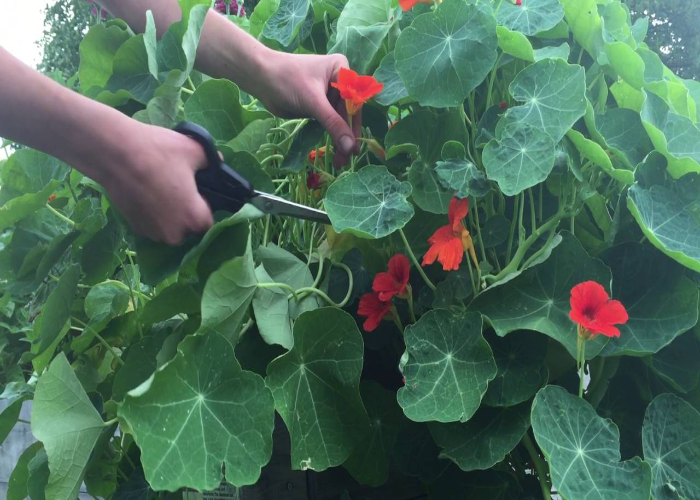
Nasturtiums offer a variety of culinary and medicinal uses. The leaves, flowers, and seeds are all edible and can be harvested throughout the growing season. Let’s see the harvesting process and different ways in which you can use nasturtiums in the kitchen and beyond.
1. Harvesting Nasturtium
When to harvest: The best part about this plant is that Nasturtiums can be harvested throughout the growing seasonas needed. The flavour of the leaves and flowers is best when they are young and tender. However, the seeds for harvesting should be collected later in the season when the plants are still green and immature.
How to harvest: Simply pinch or snip leaves and flowers to harvest. Be gentle when handling the flowers, as they are delicate and can bruise easily. Seeds you can pick directly from the plant once they have formed and are still green and plump.
Tips for successful harvesting: The flavour and quality of nasturtiums are best when harvested in the cool, early morning hours after the dew has evaporated. This is when the plant’s essential oils are at their highest concentration, providing the most robust flavour and aroma. Don’t collect all the seeds. Leave some on the plant to allow for self-seeding and natural regeneration in the garden.
2. Using Nasturtium
Nasturtiums have a peppery, slightly sweet taste that adds a unique flavour to a variety of dishes. The leaves, flowers, and seeds are all edible and can be used in numerous ways in the kitchen. Nasturtium leaves can be used fresh in salads, sandwiches, or as a garnish. The vibrant flowers can be used as a garnish for salads, desserts, or cocktails. While its seeds can be pickled and used as a substitute for capers.
Nasturtiums are rich in vitamin C and have antibacterial, antifungal, and antioxidant properties. Nasturtium leaves and flowers have been used in traditional medicine to treat respiratory ailments such as bronchitis, asthma, and congestion.
Final Thoughts!
Nasturtium is a favourite among gardeners due to being easy to grow and care for. Many Chefs love Nasturtium due to its edible nature and unique flavour.
We are sure that after reading this full guide, you must be sure about growing nasturtium in your garden or landscape. It will definitely be a rewarding and enriching experience, and you’ll definitely feel that it was worth all your time and effort. Their colourful and versatile flowers bring numerous benefits, making them an excellent choice for your garden. These versatile plants won’t just create a beautiful environment, but they will be equally functional and healthy. With a little bit of attention and care, you can enjoy the beauty and deliciousness of these lovely plants all season long.
So don’t think twice before giving nasturtiums a place in your garden. These plants will definitely give twice what care that they receive. They’ll surely reward you in the form of their striking presence, practical benefits, delightful flavour, and medical uses.

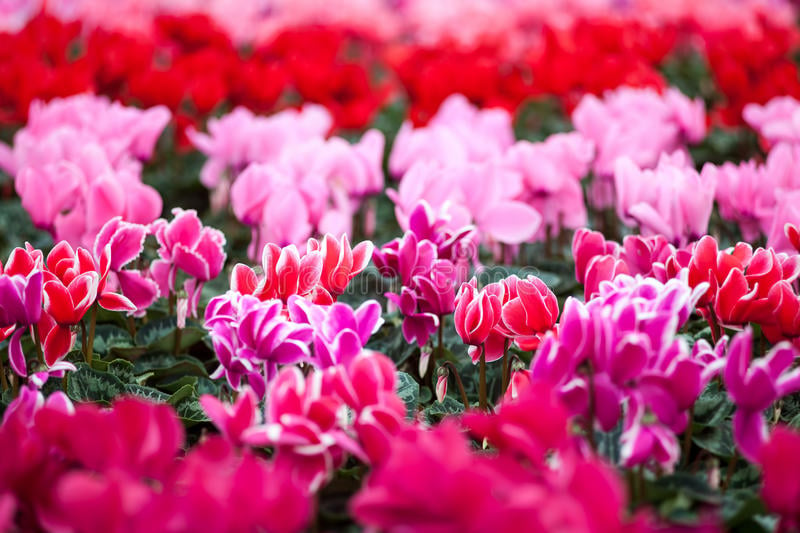
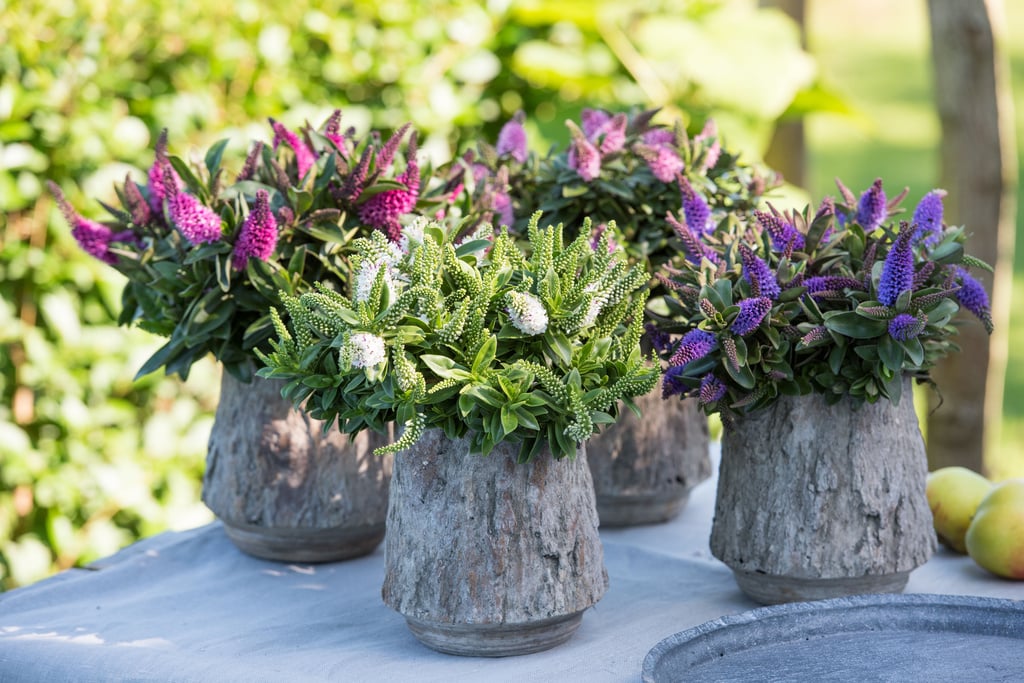
![Learn How To Grow & Care For Basil Plant [UK]](https://staging.thearches.co.uk/wp-content/uploads/How-To-Grow-Care-For-Basil-Plant.jpg)
